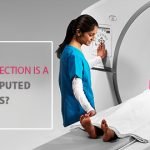The DOs and Don’ts of Dealing with Radiation in Medical Science
The famous physicist duo, Rudolf Clausius and William Thomson, stated “Energy can neither be created nor can be destroyed.” Undoubtedly, radiation being a form of energy can neither be created nor it can be destroyed. Radiation is a universal truth and mankind is still striving to figure out ideas to really work wonders and save us from radiation hazards. The best resort to deal with radiation in medical science is to ensure professional shielding. More wisely, we can opt for certain AERB registered organizations that provide exclusive services in the sphere of radiation safety and protection.
The Complete Story- Inside Out
As we know, Radiation is omnipresent and all-potent to play havoc with lives. Hospitals or diagnostic centres are flooded with radiological instruments. These tools and devices apply radiation technology like X-rays, gamma-rays, or beta rays, to either inject radioactive isotopes into the patient’s body or to administer dosages orally. These techniques help in detailed study, diagnosis and subsequent treatment of diseases such as cancer. The term radiation in medical science refers to the ionizing energy emitted by these instruments. On account of this, hospitals, diagnostic centres and chemical labs are highly prone to radiation risks. Patients suffering from specific ailments undergo radiation therapy too. For instance, chemotherapy, radiography, computed tomography, nuclear medicine, and other diagnostic techniques. Here, medical practitioners often employ radiological equipment for diagnosis and treatment. Therefore, not just patients but caregivers, medical attendants, occupational workers or relatives who accompany them to hospitals often fall prey to ionizing radiation, unknowingly. Other hospital workers who work around radiation sources (allied medical workers) are indirectly exposed to radiation. To be precise, radiation safety is indispensable for all of us.
Radiation in Medical Science- The Red Flag
It is quite evident that radiation in medical science is an alarming issue and calls for immediate redress. Have you ever wondered, if the medical world is so much susceptible to ionizing radiation and can take a toll of lives in hospitals then who is keeping the tabs?
As a rule of thumb, radiation-safety is jointly shouldered by corresponding officers and the technologists concerned. Hospitals are supposed to go precautionary and preventive, both in equipment and in practice. The safety officers are expected to keep a track of healthcare workers’ radiation exposure via TLD badges. Ideally, these should be worn at all times and turned in for exposure assessment regularly. Also, protective equipment shall be provided and an authentic record of radiation exposure through TLD badges, etc. shall be maintained. Often hospitals get busy and medical technicians miss out on several key points. More alarmingly, some clinicians do not hire qualified service providers in the first place. They even choose to ditch badges when the recorded readings fetch frightening results. Interestingly, high dosimeter readings for hospitals, are easily resolvable.
Hospitals are legally and morally bound to ensure radiation safety. The overall process is indispensable for hospitals and diagnostic centres as well. Now, let us find out some sure shot means to ensure safety and to tackle the issue.
Radiation Safety in Medical Science- some dos and don’ts
The Dos:-
• Understand radiological safety issues and be aware of the health risks associated with them.
• Hire reliable and professional radiation safety and protection service providers.
• Get the hospital premises checked thoroughly for radiation leakages at regular intervals.
• Switch to quality assurance diagnostic services and get your instruments checked frequently.
• Always keep radiation safety equipment like aprons, masks, goggles, gloves, TLD badges, and dosimeters, etc. to ensure the safety of staff and visitors.
The Don’ts:-
• Hire low quality radiation safety providers who lack authentic credentials
• Ignore hospital machinery, tools, and devices involved in radiation technology to cure patients.
• Put off regular QADR sessions pertaining to inspection and certification for hospital equipment.
• Panic about radiation, as it can be adequately shielded and escaped with professional radiological safety service providers.
Samuel Goldwyn, an American-Polish film producer once remarked, “A hospital isn’t any place to end up being sick”. Although medical practitioners and health care centres are subject to hazardous radiation within their premises yet it is possible to minimize the grave consequences. Ample time, safe distance, and proper shielding by trusted bodies are quintessential for radiation safety and protection in medical science.






